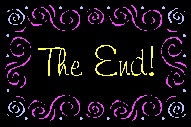Karina Teaches Worldbuilding 201 – Lesson 2
Over this year, Karina is going to share some of her writing seminars on the blog, with the lessons and references for further study. We’ll be posting these once a month. There’s no assigned homework, but if you have questions, please ask them in the comments. Her first workshop is worldbuilding. This is Worldbuilding 201, Lesson 2. Follow this link to Lesson 1. Here are the links to Worldbuilding 101 Lesson 1, Lesson 2, Lesson 3, Lesson 4, Lesson 5, Lesson 6, and Lesson 7.
Karina teaches monthly webinars as well. Please check out her current schedule, or if you’d like her to teach at your writing group or class, see what courses she can offer.
We all know the adage that readers want to discover the world along with their characters. Telling them about the world can make them tune out–and if it’s early in the book, it can cost a sale. But sometimes, you need or want to get information across and without seeding it through the book. Sometimes, it might not even be especially vital information, but just something very cool you want to share or something you feel enhances the book overall. So how do you do that?
Let’s look at a couple of ways. Again, I’ll use examples, from some different genres. The one thing I want you to note, however, is that we do not leave the point of view of the book. In other words, the reader never feels like the author has stopped the story to tell him something.
Seeing it through the character’s eyes: Rachel’s Contrition by Michelle Buckman
I stare up at it stupidly. Lilly has bewitched me or something. A church doesn’t call someone, least of all me. From the outside it doesn’t even appeal to me, despite its fame. It’s old architecture, stone with twin bell towers, build up next to the road. There’s no sweeping lawn and walkway welcoming wanderers. Of course, a person can’t live here without knowing something about it. I’ve walked by it a million times and see it from distant hills. I am familiar with its massive stone structure and legendary dome roof. It’s as much a landmark to western North Carolina as Mr. Vanderbilt’s house, a statement of continuity through a hundred years, designed by Rafael Guastivino, the Biltmore architect. As he had for the mansion, Guastavino gathered bits of artwork from around the globe to edify the structure–statues, mosaics, and whatnot. I’ve heard tales of a painting of Mary damaged in the war that tears itself anew every time it’s repaired, and of miracles granted to those who enter the church. Despite the changes in people, in lifestyle, in the failure of the Vanderbilt family to dwell even the span of a single generation in the spectacular house on the hill, the church remains as the architect intended–not a moneychanger’s attraction, but a house of worship.
From God’s view, it must be an icon, but from the street, it’s just an old stone building sitting on the edge of the sidewalk…
This description is about halfway through the book, and we’ve come to know Rachel was a poor girl who married into high society and is currently estranged from her husband. Knowing that, this description does more than give us historical facts: It illustrates her struggle to prove she’s just as educated as her peers–maybe more so–and yet still holds aspects of her past (Lilly bewitched me…it doesn’t even appeal to me, despite its fame). You can even get a sense of her own struggle–the church is grand, a historical and spiritual icon–but to look at it, it doesn’t seem like much, which is really how she’s feeling.
Here’s what the author told me about this scene: “First, the basilica is famous, so I couldn’t ignore the description, but it was also the inspiration for the whole book, so it was important to include it. Because of Rachel’s attitude, I couldn’t let her have a positive view of it. She disdains everything at that point. I listened to her (mega important!) and let the description come from her, not me. Beyond that, there is symbolism in how beautiful the basilica is on the inside; even she is wowed by it. So, symbolically, she must begin to see life from inside herself, heal internally, before she can react to the outer world.
All description should come through action or emotion. In fact, if you can generate two conflicting emotions, all the better.”
Teach your character: Monster Hunter International by Larry Correia
Click. The thing in the picture had obviously once been a person, but was now a hunched and rotting pile of rags and jagged edges and pointed teeth. The creature held what appeared to be a human leg in its mostly skeletal hand. It looked as if its lunch had been rudely interrupted by the flash of the picture. “This is a ghoul. Think of it as a super zombie on crack. Much smarter, much faster, way harder to stop. Luckily, they’re rare, which is a good thing because the one in the picture soaked up about two hundred rounds before it finally quit kicking. Head shots don’t work, though they tend to slow them down. Your best bet is to hammer them until you break down their skeletal structure to the point where they just can’t fight anymore. Then burn them to be sure. They’re usually found around cemeteries, as they’re carrion feeders. PUFF for a ghoul runs around 20K.”
I like the way Larry handles the teaching method of sharing the world. Notice that even though we have a lot of information, it’s presented in character: First, the reaction of the student, who is new to the monster world, but a little sarcastic by nature (hence, the comment about the ghoul being rudely interrupted). Then, the teacher gives his spiel, with what’s important–the ghoul’s qualities as far as its being prey for the hunters, how to kill it, and how much the PUFF (bounty) is. Also, he doesn’t just tell–he shows.
There are lots of ways to teach a character–mostly with one person instructing another. Some simple rules to teaching:
–Don’t teach a character something they would already know just to tell your reader.
–Don’t teach a character something a reader already knows (or at least don’t belabor it).
–Don’t ever just teach the information. Stories are about action and reaction, introspection and emotion. Put those elements in there, or you get a stilted dialog/Q&A.
“As you know, Gerry, the discombobulator will protect us from the worst affects of time travel.”
“Like the grandfather’s syndrome?”
“You mean where you go back in time and marry your grandmother and become your own grandfather? Can’t happen. Now, moving to the quizaflextor…you can see that time moves in several streams as predicted by the Horace’s multiverse theory. Each time stream has its own coordinate, and we push the blue button to go back and the green to go forward. Red, of course, is stop.”
It’s in the documents: Harry Potter and the Philosopher’s Stone by JK Rowling
“Oh, honestly, don’t you two read? Look–read that, there.”
She pushed the book toward them and Harry and Rob read:
The ancient study of alchemy is concerned with making the Sorcerer’s Stone, a legendary substance with astonishing powers. The stone will transform any metal into pure gold. It also produces the Elixir of Life, which will make the drinker immortal.
There have been many reports of the Sorcerer’s Stone over the centuries, but the only Stone currently in existence belongs to Mr. Nicolas Flamel, the noted alchemist and opera lover…
The thing to keep in mind about documents is less is more. Use them sparingly and with purpose. They’re a great way to impart information the characters would not normally know or just happen to learn, or can be used (like in the beginning of a chapter) to give information and set a scene without pulling the reader out of the story.

![MC900434910[1]](http://blog.catholicwritersguild.com/wp-content/uploads/2014/10/MC9004349101.png)



